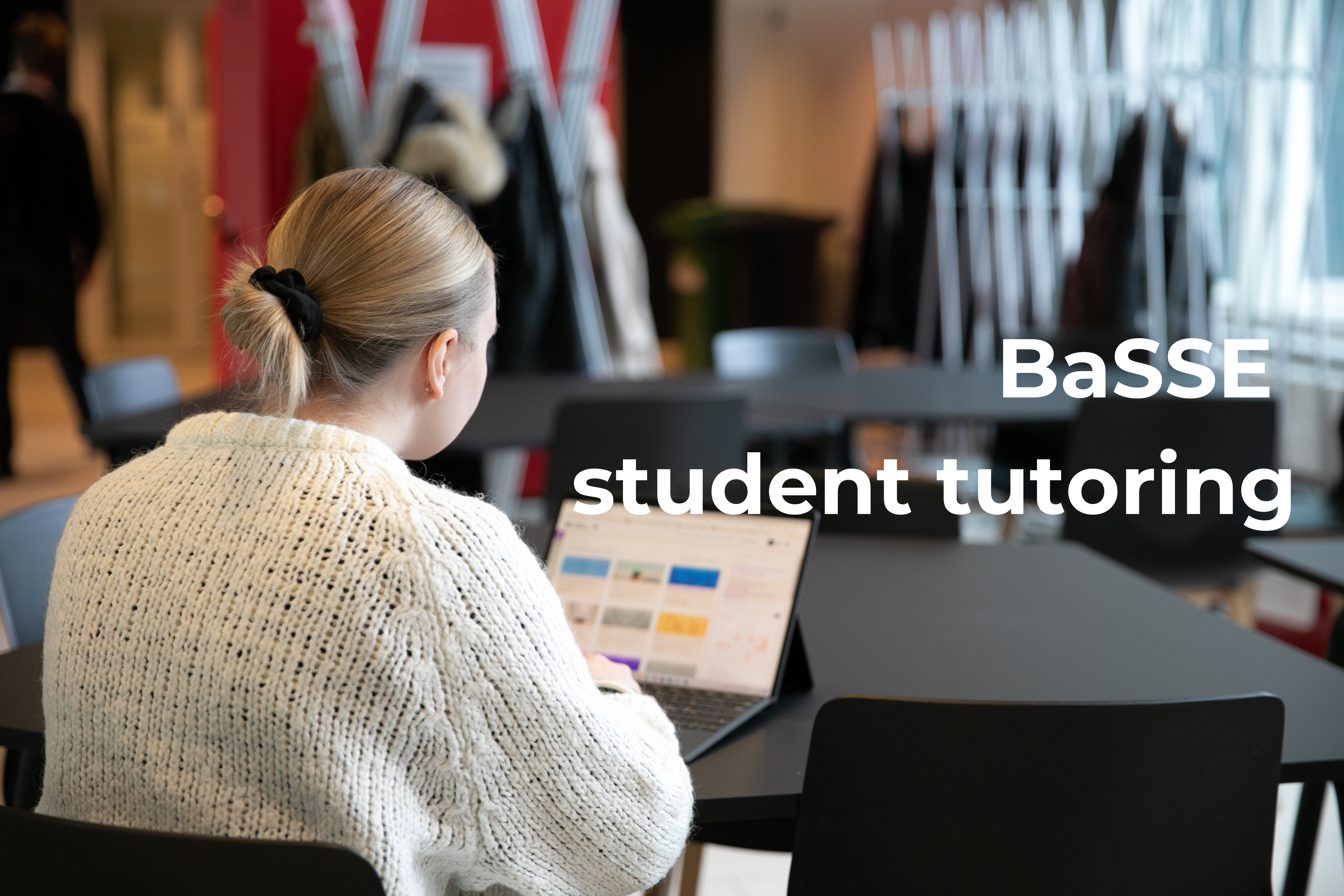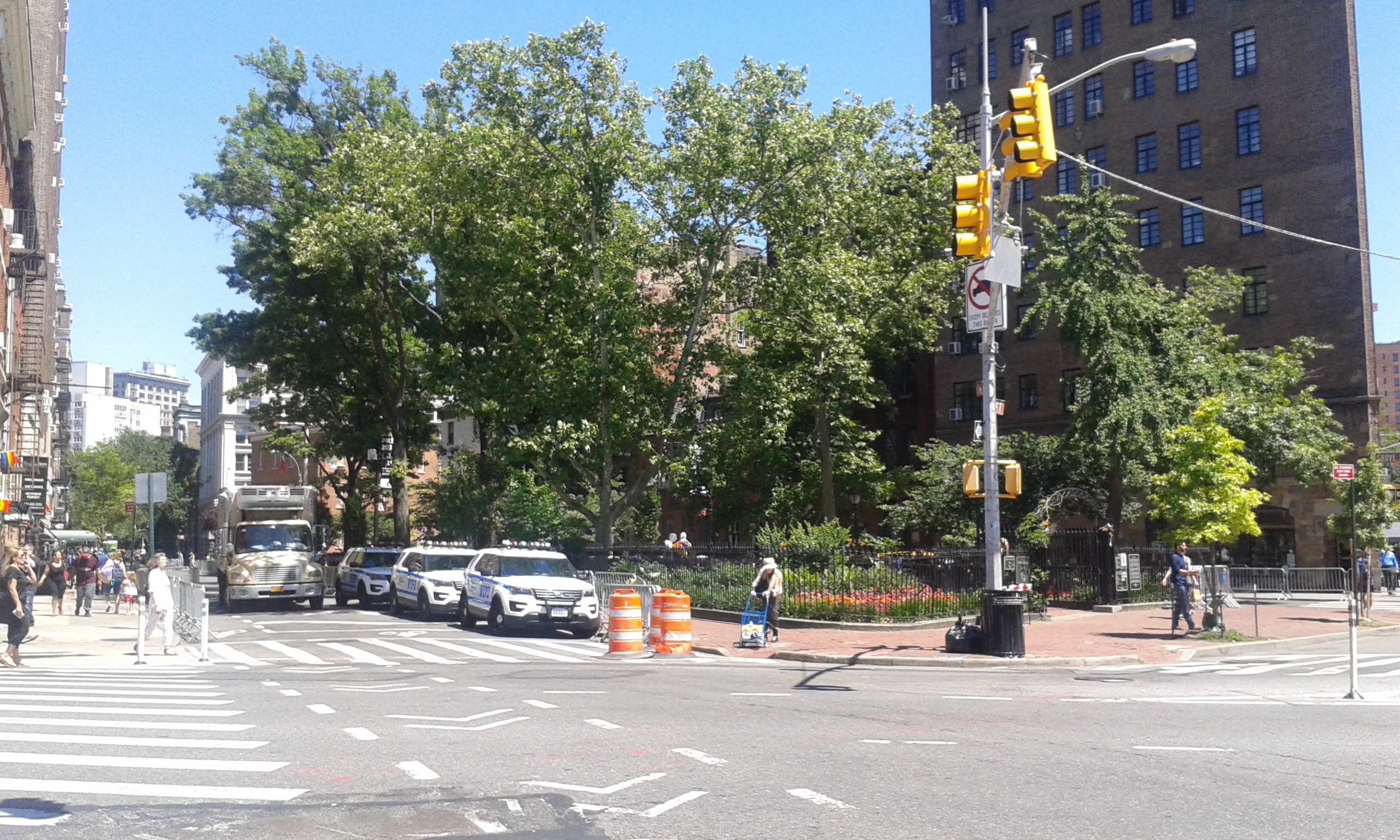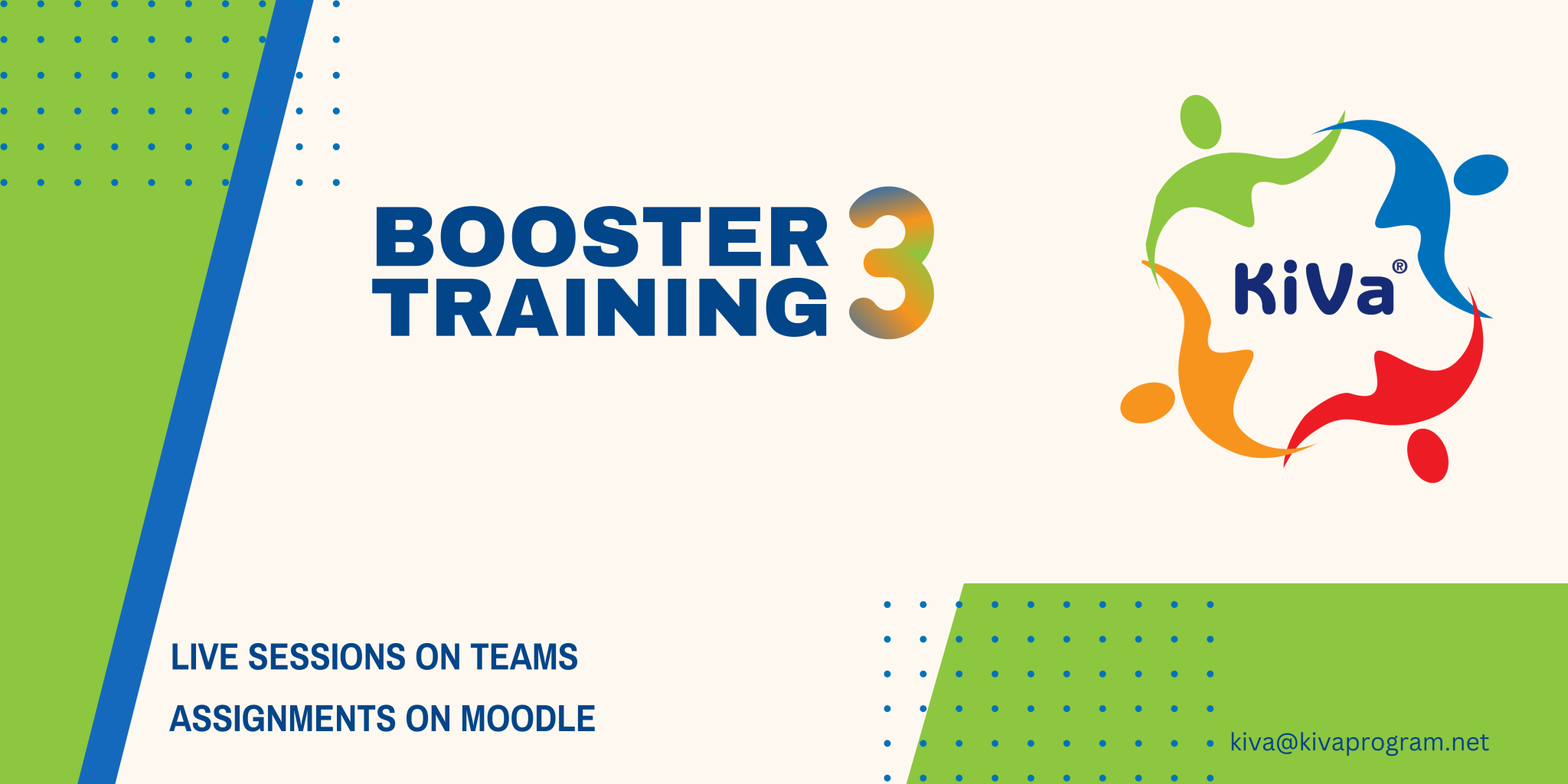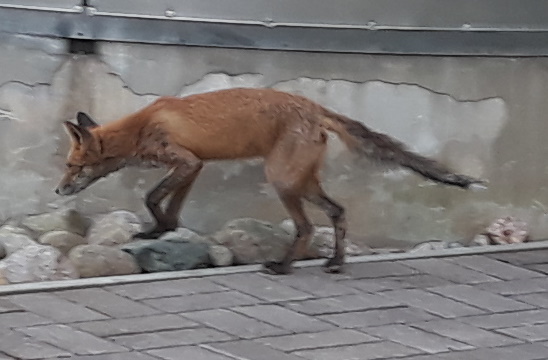- Teacher
Sabine Burghart
University of Turku Moodle
Resultados de la búsqueda
By the end of the course the students should feel comfortable and confident about discussing different kinds of current or topical legal issues requiring a multi-faceted acquaintance with the vocabulary/terminology of the field and the various linguistic strategies employed in legal language in general. The aim of the course is to expand on the students' existing command of legal English by introducing a variety of texts and topics dealing with current issues they will discuss in class, and to build their confidence in using legal English by offering a platform of up-to-date, relevant material and topics to choose from.

- Teacher
Marianna Hintikka
Tavoitteet
After the course the student is familiar with the vocabulary and phraseology needed in basic everyday life situations. The student is also able to ask and answer simple questions and knows how to pronounce Finnish words.

- Teacher
Alexandra Virtanen
Environmental and resource economics is a sub-field of economics that applies tools of the economic theory and econometrics to such issues as climate change, air pollution, sustainable forest management, water use, pollution, land use, fisheries, recycling, and hazardous wastes. It has become a critically important sub-field due to growing environmental problems of the twenty-first century.
After completing this course, successful students will be able to understand, explain and critically assess:
- interactions between the economy and the environment
- the concepts of market failure and property rights
- environmental policy instruments
- revealed and stated preference techniques
- advantages and limitations of cost-benefit analysis
- conceptual framework and theoretical basis for environmental valuation
- central concepts and theories in natural resource modelling
- modelling of natural resources (e.g. fisheries, forest, wildlife).
- Teacher
Timo Kuosmanen
preIB biology course
- Teacher
Maaria Tringham
preIB Euroopan historian kurssi 1 (1900-luvun historiaa)/20th European History Course
- Teacher
Anu Waltari-Grundström
2023 Advanced international law and technology OTMU2437-3004, OTMU2438-3006, OTMU2438-3004 (Master thesis in International law and technology) course page
- Teacher
Ekaterina Markovich
2023 International Law and Technology OTMU3001-3100 course page
- Teacher
Ekaterina Markovich
nternational Trade in a general fashion, is about ensuring economic growth through the liberalisation of trade, which is regulated by the World Trade Organisation. To allow for the flow of goods across the world, further regulation or boundaries are necessary to provide legal certainty to the parties involved. Therefore, International Trade Law looks into the regulation of international sales of goods, modes of transport, insurances, financing modes, among other, which are essential to delimit the rights and obligations of the parties. This course offers an overview about the interplay between private and public actors.
- The course will introduce you to the theories justifying international trade, a general introduction to the World International Trade Law (WTO Law) and EU trade perspectives. By exploring the structure, principles, main WTO Agreements shaping international trade, you will be able to have a holistic approach to trade, meaning from both public law perspective and international transactions one. Furthermore, the COVID Pandemic challenged traditional notions and preconceptions about trade, this is why exploring what this challenges are is important in the context of this course.
- In this course you will learn: 1, about the interaction between the EU and WTO; and 2. the forced or challenge evolution of international trade during the pandemic. The study of the relationship between WTO and EU will consist of the analysis of the status of the EU in the WTO, and the legal effect of WTO law in the EU.

- Teacher
Dhanay Cadillo Chandler
The thesis group for international law subject "Critical International law & technology" including OT00BD20,21,22,23: Research Plan, Literature, Seminars 1 and 2, and the Thesis 60 credits (minor's subject may take IL minor level 3 (10 credits) if pre-requisite courses have been taken and credited)
- Teacher
Outi Korhonen
Specialization course in IL and technology 12 credits (10 credits)
- Teacher
Outi Korhonen
Course-platform for Project Aces starting at 20th of May 2019.
- Teacher
Susanna Ahteensuu
This moodle course is for students who wish to do their Masters thesis in Digital Manufacturing and Surface Engineering (DMS) research group at the Department of Mechanical and Materials Engineering.
- Teacher
Ashish Ganvir
- Teacher
Jussi Mertsola
Turnitin course for check of the MSc thesis by Aiman Hanif.
- Teacher
Alexandra Veledina
The course covers the core algorithms and design principles of autonomous systems, particularly from the perspective of autonomous robots and AI systems. Attention will be paid to key elements of mobile robotic solutions and the foundations of real-world autonomy.
The implementation of the algorithms will be done mostly in Python and within the Robot Operating System (ROS) middleware. Different types of simulations will be used to test the algorithms, from basic Python scripts to Gazebo + ROS simulations.
- Teacher
Tomi Westerlund
Course area with Turnitin for the MSc thesis.
- Teacher
Alexandra Veledina
- Teacher
Ulla Ahlmén-Laiho
In this introductory course, the student will learn the very basics of programming, such as iterating arrays, reading files, debugging, and data conversion, as well as practical tools for reading and analysing datasets that are often used in humanities. No prior programming experience is required.
- Teacher
Joonas Kinnunen
https://opas.peppi.utu.fi/en/course/DTEK2084/92053
- Teacher
Tomi Westerlund
The course content is divided into two modules: (1) Fundamentals of C programming language and (2) embedded systems programming using Bosch Nicla Sense ME Arduino.
- Teacher
Anam Tahir
WELCOME TO YOUR COURSE PAGE!
- Teacher
Jenna Salminen
This course examines the conventions of writing academic texts in English. Intermediate level.
- Teacher
Elina Siltanen
Moodle course for the international tutors in Bachelor's Degree Programme in Sustainable and Social Entrepreneurship (BaSSE).

A small course for one credit, about pedagogy for university teachers.
- Teacher
Trang Nguyen
Kurssipohja pre-DP:n biologian ja kemian opintojaksolle lukuvuonna 2024-2025.
- Teacher
Marianna Vanhatalo
The course gives the student an introduction to innovation and entrepreneurship in the context of sustainable cities. The course relies on opportunity recognition, a theory based on entrepreneurship, giving an understanding of the process of identifying, exploring, and developing an entrepreneurial opportunity. Another well-known entrepreneurial approach, effectuation, is introduced to further familiarise the student with opportunity identification, decision-making in uncertain situations and new venture creation.
The course links to the United Nation’s Sustainable Development Goals (SDG 11 particularly), and gives the student understanding on how innovation and entrepreneurship can be utilised in solving sustainability challenges related to cities and communities.

- Teacher
Satu Aaltonen
This course is a 5 credits course belonging to the basic studies (perusopinnot) of speech-language pathology (SLP) students of the University of Turku, but is also offered to students of the open university, and other Finnish universities as well as to exchange students.
Upon the completion of this course, students will understand:
- the principles of bilingual development at different stages of the life cycle
- the social implications of bilingual development
- cognitive activity (processing, memory, attention) in bilingual communication
- the principles and challenges in assessment and rehabilitation of language disorders in bilinguals
- Teacher
Raymond Bertram
After the course, the student will:
• Be familiar with the physical and technical principles of electron microscopes.
• Have knowledge on the basic methods used for sample preparation in biomedical electron microscopy.
• Know how molecules can be localized in biological samples using antibodies and other probes.
• Know how electron microscopes can be used to acquire three-dimensional images of biological samples.
• Know the basics on how electron microscopy can be applied in structural biology, element analysis, and characterization of materials.
• Have experience in using electron microscopes and in image interpretation.
• Know examples on how electron microscopy has been applied in biomedical research.
- Teacher
Markus Peurla
After the course, the student will:
• Be familiar with the physical and technical principles of electron microscopes.
• Have knowledge on the basic methods used for sample preparation in biomedical electron microscopy.
• Know how molecules can be localized in biological samples using antibodies and other probes.
• Know how electron microscopes can be used to acquire three-dimensional images of biological samples.
• Know the basics on how electron microscopy can be applied in structural biology, element analysis, and characterization of materials.
• Have experience in using electron microscopes and in image interpretation.
• Know examples on how electron microscopy has been applied in biomedical research.
- Teacher
Markus Peurla
The course will introduce students to the different seminar series held on the campus. After each seminar lecture the student will write a summary/abstract in the learning journal, focusing on the main message of the presentation. Upon completion of the course, the student is able to:
- Understand scientific presentation and communication in comprehensive way.
- Extract key scientific messages from the presentations and produce condensed summaries.
- Recall information and utilize note-taking during the presentation

- Teacher
Kari Vienola
Bioimage Informatics is a field of science that deals with the processing, analysis, visualization, handling and annotation of bioimages, using specialized software tools. An important aim in the field is to extract quantitative information from digital biomedical images. Starting from the fundamental concepts of digital images in biomedical sciences, students are introduced to various image processing and analysis techniques and tools. Along with lectures, demonstrations will be arranged to provide hands on training in image processing and in-depth and intuitive understanding of modern bioimage informatics approaches and applications. Further studies around the topic can be continued on course BioImage Informatics 2.
After the course, the student will be able to identify common phases in bioimage analysis, select proper methods and approaches for basic analysis tasks, explain the benefits of the use of bioimage informatics for quantification of biomedical images, and compare the differences of manual and computer based analysis of images.
- Teacher
Pekka Ruusuvuori
Starting from the physical principles of clinical and preclinical imaging, the students are introduced to various imaging modalities available at the Turku University Hospital and at the Turku Center for Disease Modelling. The course consists of lectures and Moodle-based assignments to give the student a basic understanding of imaging modalities used in the hospital and provide the knowledge basis for more advanced courses. On the completion of the course, the student will be able to:
- Explain the physical principles how different medical imaging modalities operate (X-ray, MRI, Nuclear Medicine)
- Understand the basic ideas of tomography for imaging (CT, PET)
- Give examples of the technical details for various medical imaging equipment
- Describe what is ionizing radiation, how we protect ourselves from it and how the use of it is controlled in the legislation

- Teacher
Jani Saunavaara
By choosing a project topic of their choice, the students will familiarize themselves with a research field related to the biomedical field, ranging from medical imaging used by the University Hospital to image analysis on human-derived image data done by various research groups within the university. The goal is to apply their knowledge and gain deeper understanding into the use of these techniques, whether it is medical imaging or ex vivo image analysis, and how they can improve future patient diagnostics. On the completion of the course, the student will be able to:
- Explain and understand in detail the techniques used in the project (whether it is image analysis or image acquisition).
- Identify key elements for a standard project workflow.
- Design/Execute a project in a company or university setting.
- Teacher
Kari Vienola
R is a freely available programming platform, rapidly becoming a modern standard. The objective of this course is to get familiar with working in the R environment and how you can code programs to help you with various problems. The concepts are introduced during joint computer exercises, interspersed with independent work. Emphasis is on learning to program and seeing what you can do with it. No prior knowledge is needed.
- Teacher
Jon Brommer
The aim is to familiarize students with various aspects related to
starting a career as a researcher, and conducting research in general;
the scientific method and various stages of employing science, including
drawing up a research plan, literature search and referencing, drawing
inferences from the empirical data, ethical considerations, the
presentation of scientific results, both written and orally, aimed at
the scientific community and the general public as well as composing a
CV and research career options within and outside of academia. During
the course, students gain an understanding of a researcher's work and
career.
- Teacher
Jon Brommer
Course description:
This course will focus on one of the top 5 conservation concerns worldwide – the spread, establishment, and impact of invasive species in new locations. Students in the course will become familiar with ecological and evolutionary theories pertaining to species invasions, and with methods for assessing the spread and impacts of invasive species at local and global scales. The course will examine biological invasions at multiple levels, including: (1) ecological impacts and predictors of invasive species establishment and spread (e.g., competition, predation, symbiotic relationships); (2) evolutionary insights of invasions and recipient communities (e.g., founder effects, hybridization, spatial sorting, coevolutionary history; (3) management implications of invasive species establishment and spread (e.g., prevention, mitigation, eradication); and (4) the effects of human-induced global change (e.g., climate change) on the spread of non-native species.
- Teacher
Veijo Jormalainen
The student learns what is needed to complete the M.Sc. thesis in Evolutionary Biology, and plans the M.Sc. thesis. The course if for students in Master Degree Programme in Bioscience, Evolutionary Biology track
- Teacher
Jon Brommer
The course will cover fermentation methodology, growth kinetics of microbes in different culture conditions, isolation of industrially important microbial strains and methods to improve the strains further. Also, sterilization processes used in fermentation, design and use of fermenters and significance of aeration will be covered. The course content also includes protein purification techniques and their operational principles and applications. The basis of various methods for protein analysis will be covered and in addition, the right handling and storage of proteins will be discussed.
- Teacher
Tero Soukka
Omics Technologies and Bioinformatics course is organised by the Turku Bioscience Centre. During the course students are introduced into the cutting-edge technologies and methodologies available for omics analyses and learn how these tools can be applied in biomedical research. Omics technologies facilitate high-throughput and unbiased investigation of the genome and its products. Omics techniques can be applied to study structure and variation of genomes (genomics), regulation of genome organization and gene activity (epigenomics) as well as measurement of abundancies and activities of genomic products, such as mRNAs (transcriptomics), proteins (proteomics) and metabolites (metabolomics) in diverse cells, tissues and conditions. These approaches and their integration can provide valuable information of biological processes in both healthy and disease conditions and molecular mechanisms underlying disease states. The methods also enable discovery of novel biomarkers and targets for therapeutic interventions. The course is divided in two parts: Module 1 introduces the technologies and their application while Module 2 covers the bioinformatical approaches and methods used in the analysis of the high-throughput omics data.
- Teacher
Riikka Lund
After the course, the student has knowledge of:
- viruses and virus groups important for human health
- structures, replication, classification, and diversity of the viruses at the general level
- pathogenicity mechanisms of viruses and their significance
- immunological mechanisms related to virus infection
- methods used in virology
- use of viruses in biotechnology and biomedicine
- Teacher
Petri Susi
https://opas.peppi.utu.fi/en/course/BKEM1071/20320?period=2022-2024
- Teacher
Georgy Belogurov
After this course the student should be able to
- find, understand and critically analyze protein 3-dimensional structural information.
- understand the basic principles behind methods used in structural biology
- comprehend molecular modeling and how the data differs from experimental protein structures
- carry out in practice crystallographic model building and molecular modeling
- know how to apply these complementary methods to study different aspects of proteins
- Teacher
Mikko Metsä-Ketelä
It’s been six years since you became a KiVa trainer, what a journey! We are interested in hearing what has happened during this journey and how you have grown as a KiVa trainer. This short course consists of two assignments and two live sessions.

- Teacher
Anna Murgo



